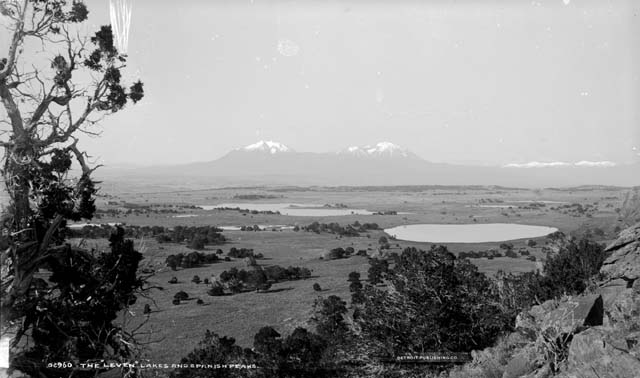Welcome to Lathrop State Park. We want you to have a good time walking our trails and hiking our terrain through grass, trees, cactus and rocks that may require using your hands seeking your geocache. Specific geocaches inform you of terrain that is more that a casual walk. Each individual geocache description lists a parking lot where you can start your walk, and that gives you time to see what this park is about as you seek your goal. Do not forget to enjoy the view of the mountains on the horizon. We recommend that you do not use the geocache description Driving Directions printed below the latitude and longitude coordinates. Using the Driving Directions has you parking and walking on private land outside the Lathrop State Park boundary fence. You may be issued a citation and/or have your vehicle towed. There is one fence within Lathrop SP that separates Martin Lake and Horseshoe Lake. This fence has two roads to travel from one lake to the other for you to use. Please use your park map that you were issued when you entered the park to see the park boundary fence. Lathrop State Park, while sitting in the shadows of the Spanish Peaks, has the honor of being Colorado’s 1st State Park and covers 1594 acres. One of the main features of the park is its two lakes; Martin Lake covers about 180 surface-acres while Horseshoe Lake has about 150 surface-acres. Both host a wide range of water activities.
Entrance to Lathrop State Park in Walsenburg, CO requires a park pass that can be purchased at the visitor center for display on your vehicle windshield. There is also a self-serving station near the park entrance.
Two types of passes are available: A daily Pass is valid from the day purchased until noon the following day. An Annual Pass is valid at any state park recreation area for the calendar year. Colorado disabled veterans displaying Colorado Disabled Veteran (DV) license plates are admitted free without a pass.
 Photograph courtesy of History Colorado
Photograph courtesy of History Colorado
William Henry Jackson was born in Keeseville New York on April 4, 1843. He began working as a photographic retoucher in 1858 and studied painting and drawing. He made sketches during the Civil War and turned to photography as a career in 1867 when he moved to Omaha and found employment with a leading local photographer Edric Eaton Hamilton. In 1868 he purchased the Hamilton Studio with his brother, renaming it Jackson Brothers Studio, and a year later purchased his former employer, Eaton Hamilton’s studio.
Jackson and two friends set out for the western frontier to make their fortune in the silver mines of Montana. In the Nebraska Territory the three young easterners signed on as bullwhackers for a freight outfit bound for Montana. Despite knowing nothing about oxen or hauling freight, Jackson soon grew proficient in handling the powerful draft animals. During the summer of 1869 Jackson began photographing the construction of the new Union Pacific Railroad.
Jackson's artistic growth as a landscape photographer grew with the 1869 work and quickly matured when he was hired by Dr. Ferdinand V. Hayden as the official photographer for the U.S. Geological and Geographical Survey who was organizing an expedition that would explore the geologic wonders along the Yellowstone River in Wyoming Territory. For many years, stories about geysers and waterfalls were thought to be tall tales, but Jackson provided proof of their existence. Public interest resulted in the U.S. Congress officially designating Yellowstone National Park in 1872, and Jackson’s name became a household word.
William Henry Jackson’s most famous image was taken in 1873. Over the years, stories of a mountain with a large cross etched in its side had been circulating, but it wasn’t until Jackson risked climbing Colorado’s western slope of the Rocky Mountains that its existence was proven. Within a few months of the photograph’s publication his image of the Mount of the Holy Cross adorned the parlors in thousands of American homes. Jackson’s work for the U.S.G.S. ended in 1878.
William Henry Jackson in 1879 established a studio in Denver that specialized in landscape and scenic views. During the Denver years (1879-1898) he made scenic views of the growth of the mining industry, the railroads, settlements, cities and natural wonders in Colorado and the Rocky Mountain West. His travels brought him to Walsenburg and Huerfano County in 1885-1886. He photographed Walsenburg, the future area Lathrop State Park, scenes in the La Veta Area and the railroad and scenes on what we now call Old La Veta Pass.
Jon Sudar, a local volunteer who practically lives in Lathrop SP, knew about William Henry Jackson’s visit here and knew that he could find the location that was somewhere on the Hogback spine within the park. It did not take Jon too long using a compass bearing on a permanent exposed large boulder in Horseshoe Lake and a couloir on the east ridge of the East Spanish Peak.
Lathrop State Park is 3 miles west of Walsenburg via US Hwy. 160. Park your vehicle at the swim beach parking lot to begin your route to the geocache. Be aware that there are rattlesnakes in the park.
The initial geocache is a 1 inch by 2 inch tube and the final geocache is a 4 inch by 5 inch plastic tube. They both wear camouflage. The first tube contains coordinates to the second tube that contains a log to validate your find and souvenirs. Your option to replace the souvenir you selected with one of your own of equal or greater value.